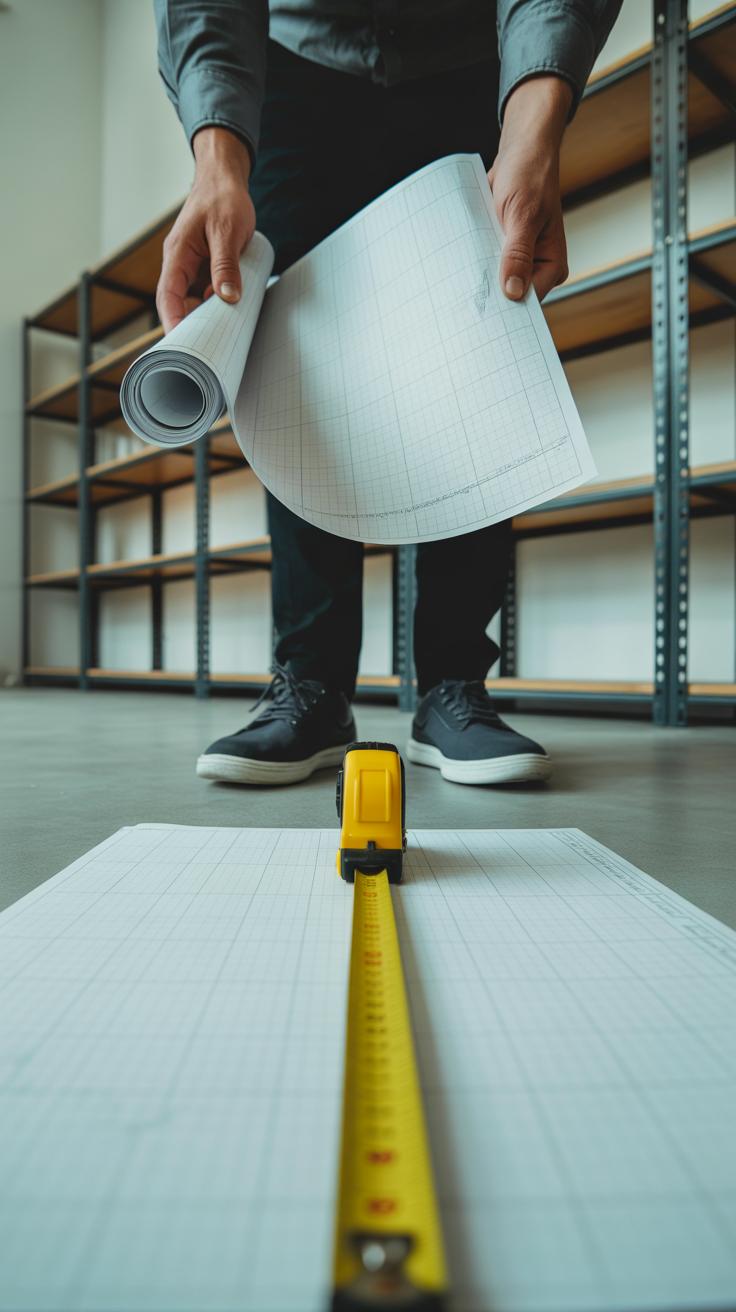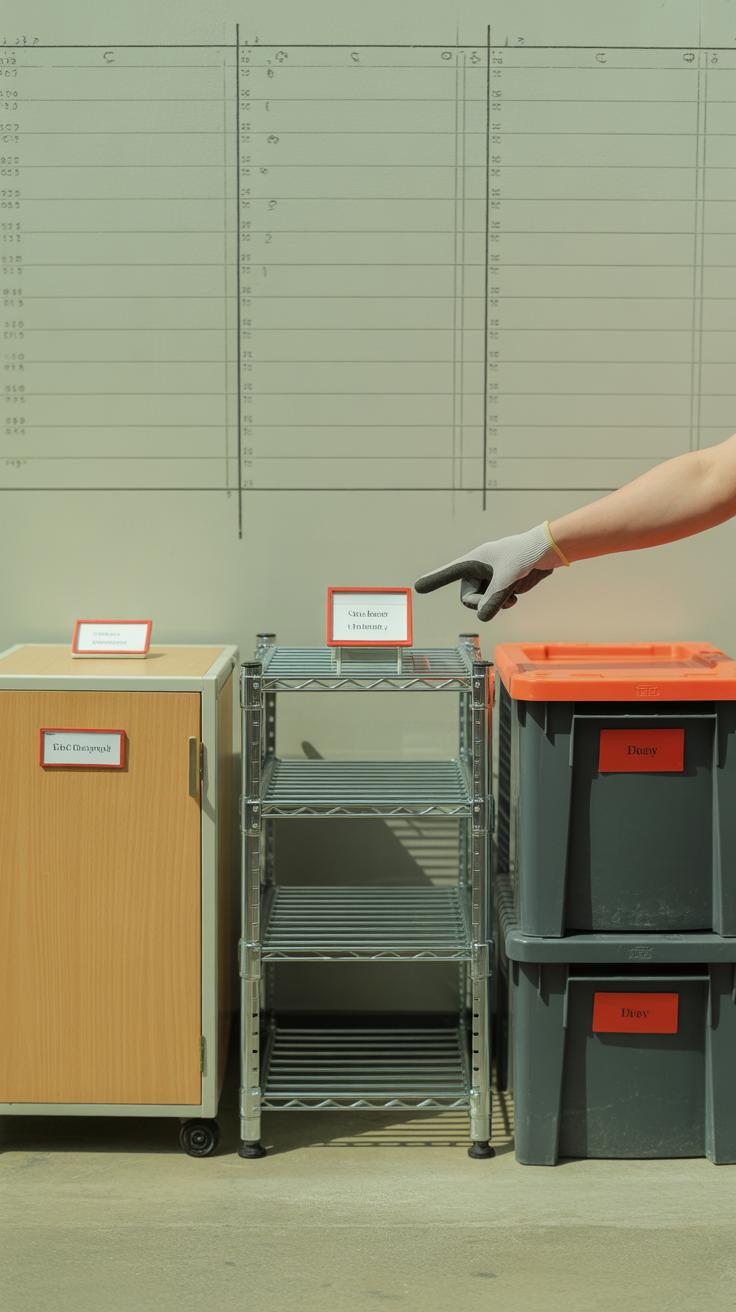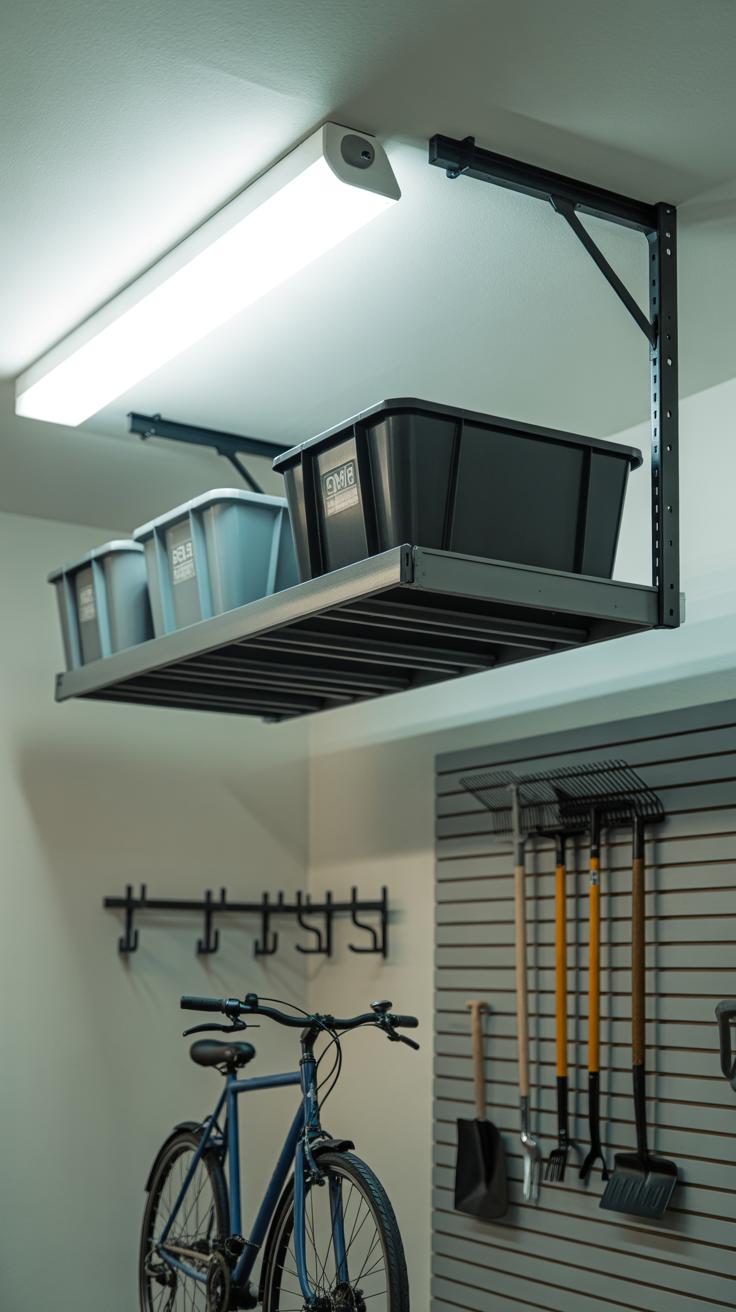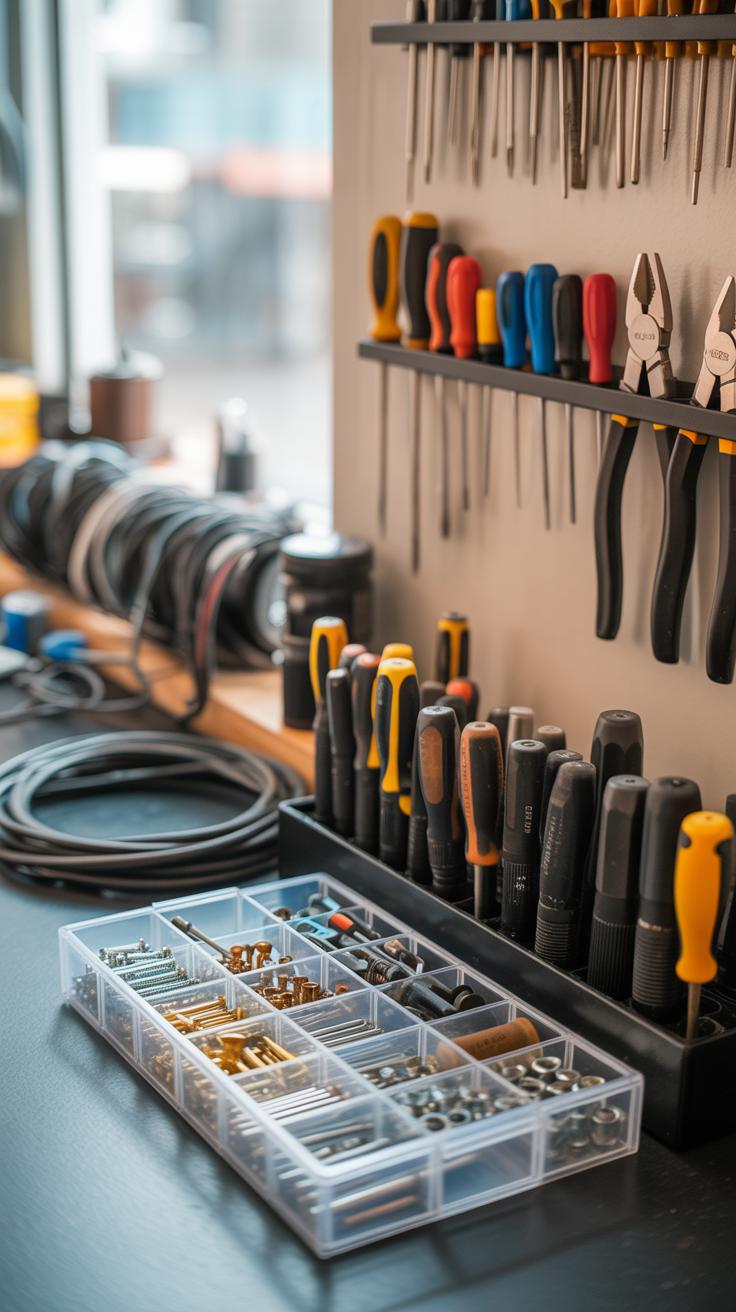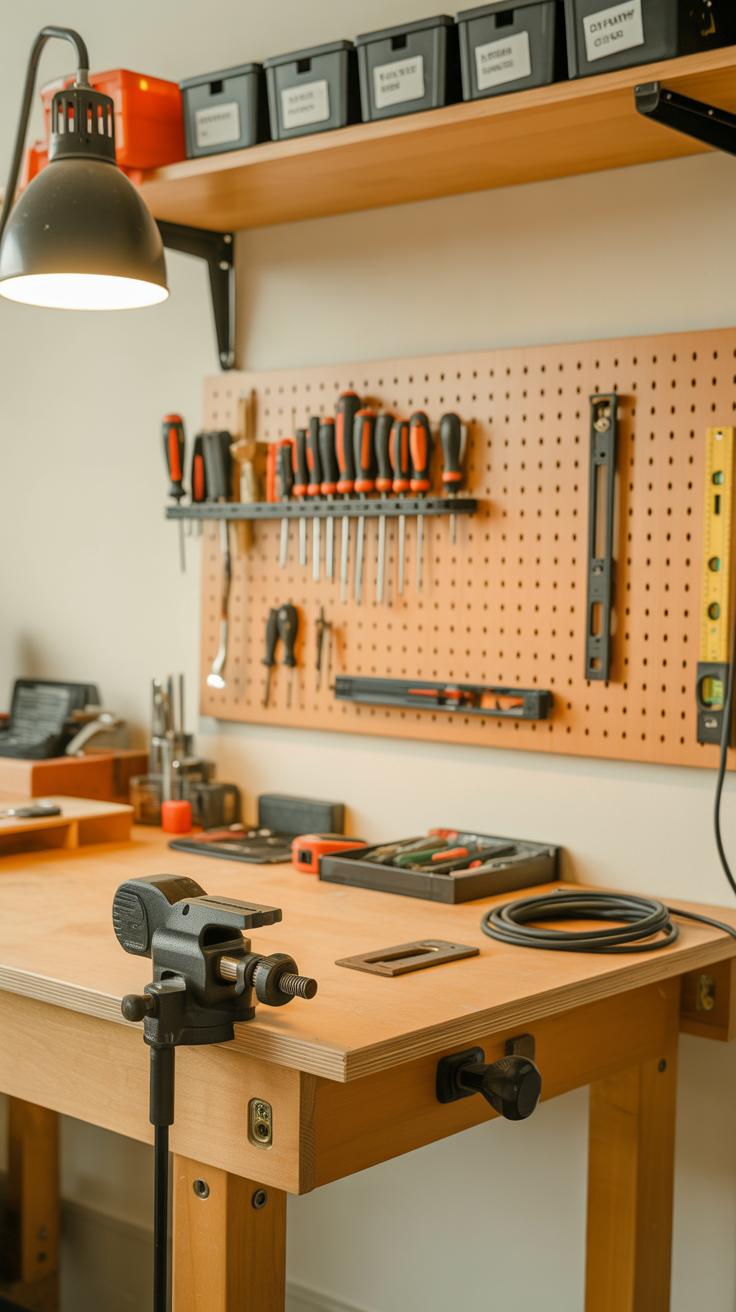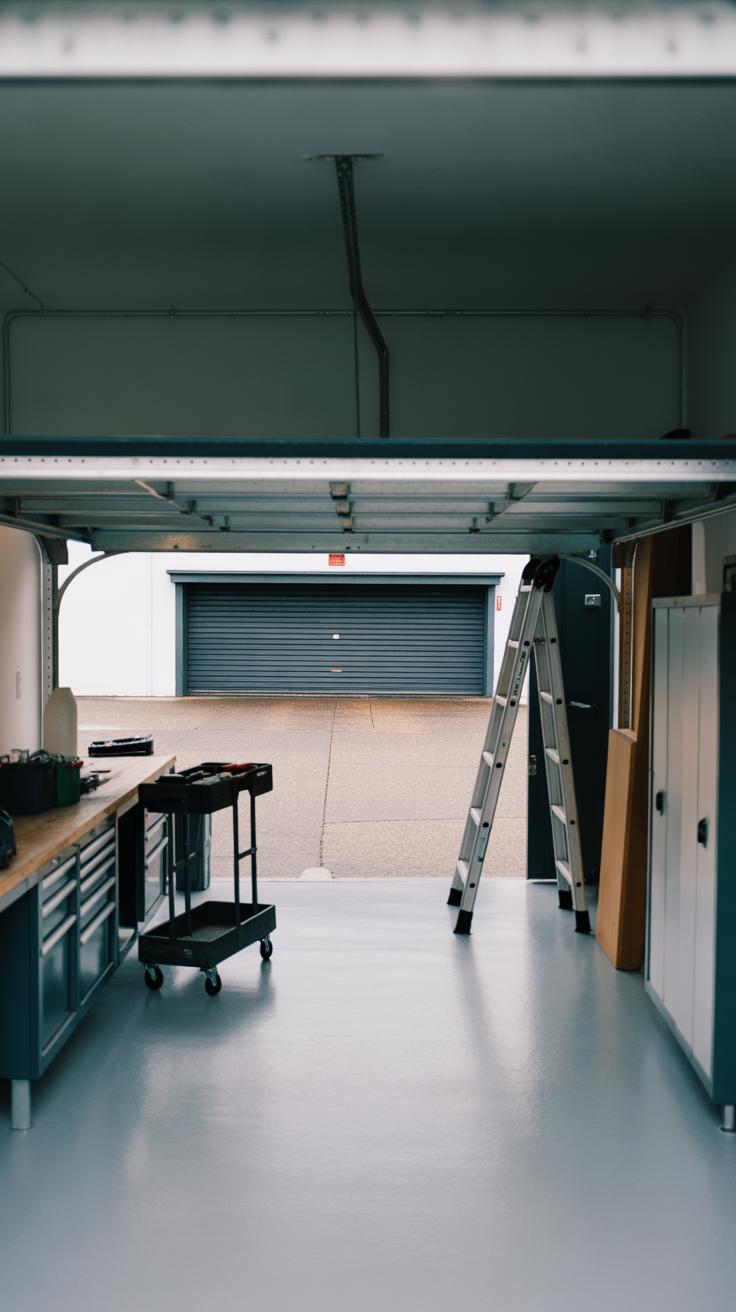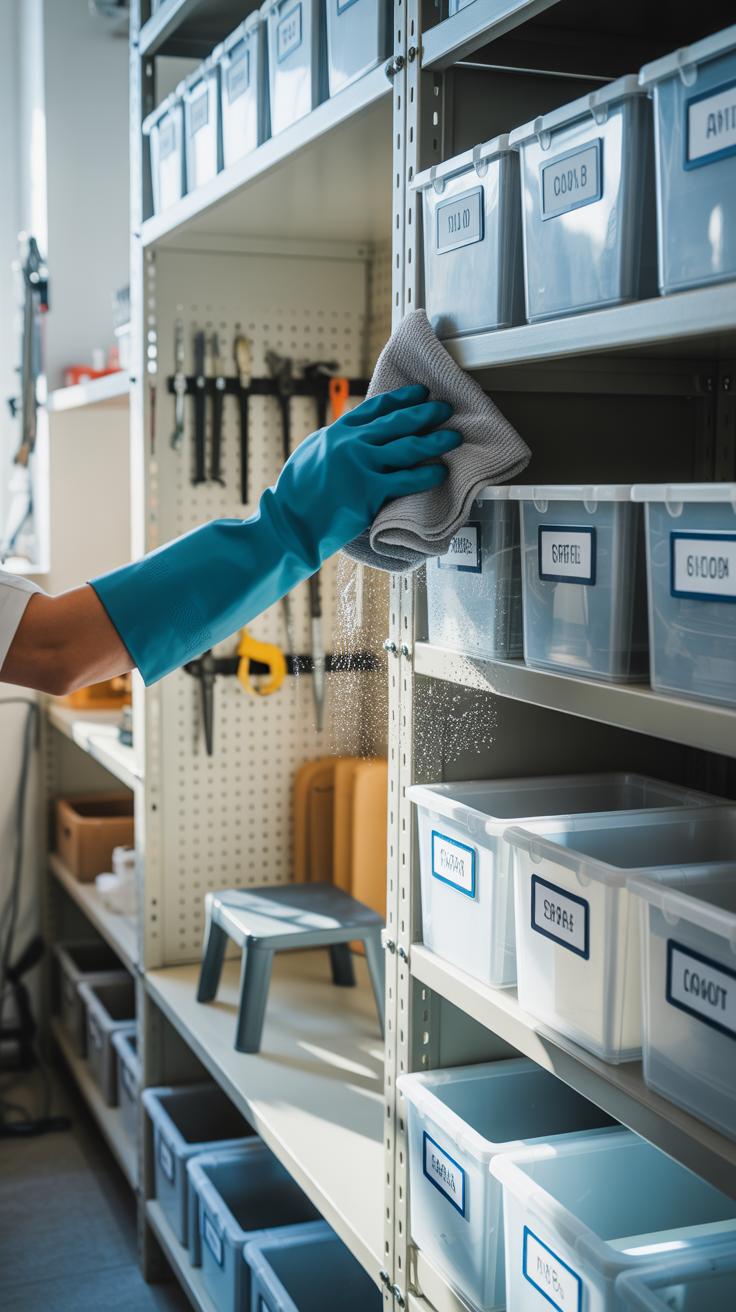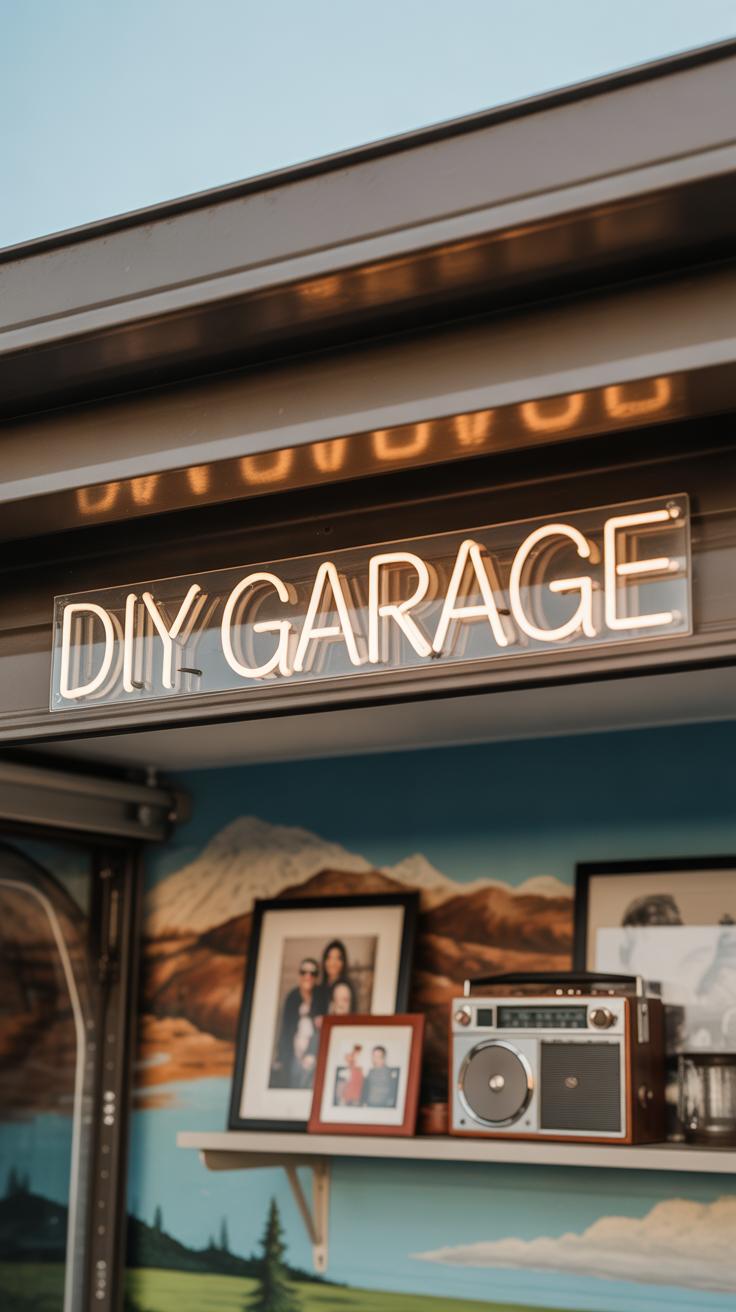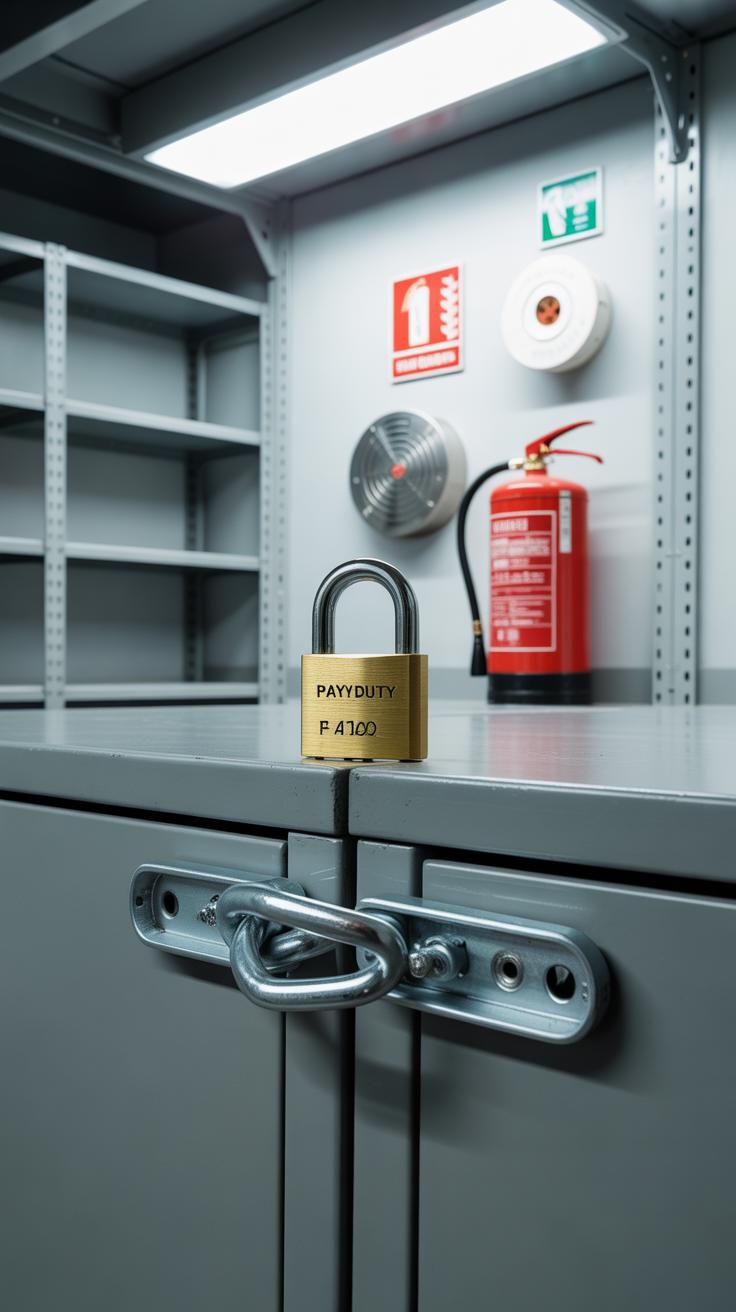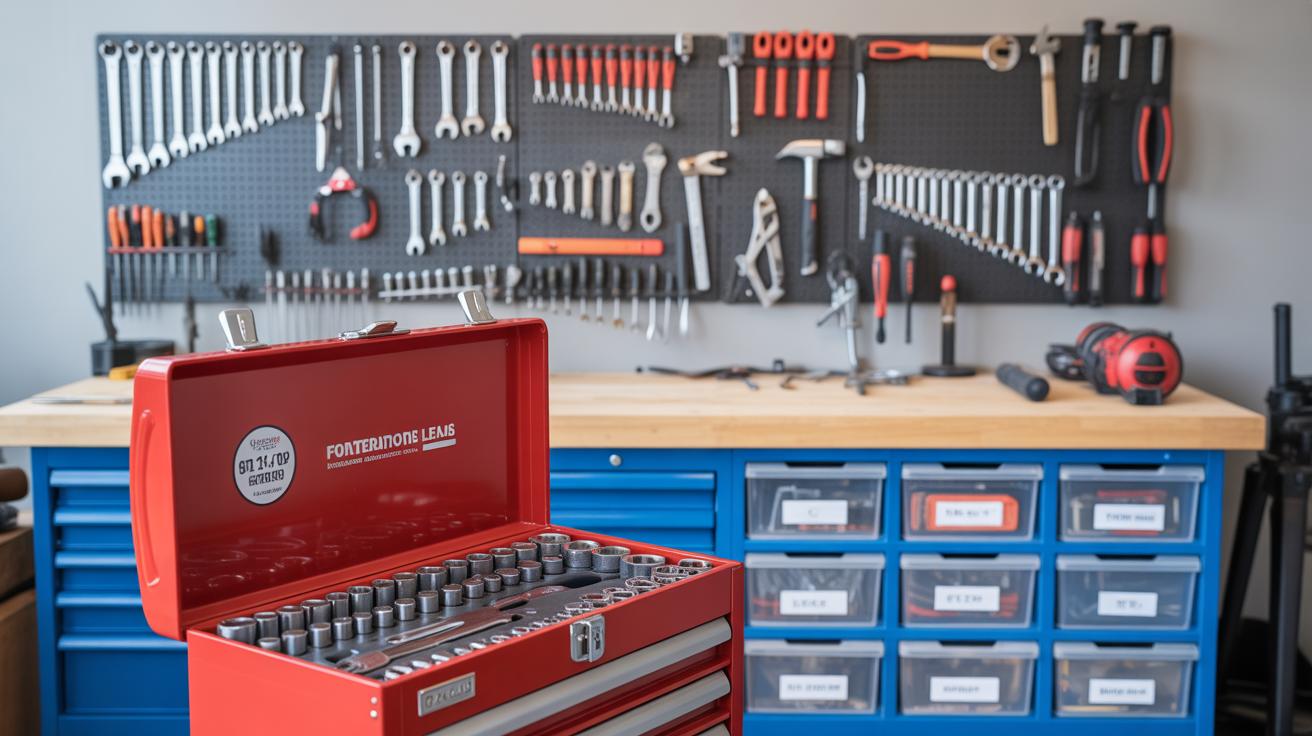
Modern Garage Storage Inspiration For A Neat Workshop
Introduction
Your garage can be more than just a place to park your car. It can become a neat, organized workshop where everything has its place. Modern garage storage inspiration focuses on creating a space that is tidy, practical, and easy to maintain. This article explores various ideas to help you transform your garage into a functional area for your tools, equipment, and projects.
Discover smart storage solutions, from shelves and cabinets to wall-mounted racks and pegboards. Learn how to maximize space and keep your garage clutter-free. Whether you use your garage for hobbies, repairs, or storage, these tips will help you design a workshop that works for you every day.
Planning Your Garage Storage Layout
Assessing Your Space And Storage Needs
Start by measuring your garage carefully—length, width, and height. Don’t just guess; you want exact numbers to avoid surprises. Think about the items you need to store: garden tools, sports gear, seasonal decorations, maybe that old bike you never ride but feel you should keep. Write everything down. Now, consider how often you actually use these things. Some items are daily essentials, others only come out once a year. This helps you figure out what should be easiest to access and what can be stashed away.
You might find yourself wondering, do I really need to keep all this stuff here? Space can feel limited, but grasping what’s truly necessary is step one. Sort your belongings into frequent-use and rarely-used categories—it feels a bit tedious, but it saves headaches later.
Creating Functional Zones For Efficiency
Breaking your garage into zones is surprisingly helpful. Allocate a section for parking your car, but don’t ignore the rest. You’ll want a dedicated spot for tools—maybe pegboards or a tool chest near a workbench where you actually spend time fixing things. Another corner can house sports equipment or gardening supplies.
This division isn’t about strict lines on the floor but about organizing activities and storage logically. It improves flow and prevents clutter from creeping into every corner. You might even notice that by arranging zones thoughtfully, your garage feels bigger. Sometimes you have to shuffle things around a bit before finding what works, so don’t hesitate to tweak your layout.
Choosing The Right Storage Units
Picking the right storage units can feel a bit overwhelming, especially with all the options out there. Cabinets, shelves, and bins each have their place, depending on what you actually need to store and how you like to work in your garage. Think about what you use most often and how quickly you want to access it. For example, heavy tools might do better in sturdy cabinets, while lighter items can go on shelves.
Some points to consider when choosing storage units:
- Cabinets: Great for hiding clutter and keeping things clean. They also protect from dust and curious pets.
- Shelves: Open shelves work well if you want things visible and within easy reach.
- Bins: Use bins to group smaller items but be careful not to stack too high — you might lose track of what’s inside.
It’s tempting to get fancy modular systems, but sometimes simple solutions fit best. Think about the size of your garage and what you really need. You don’t want to cram everything in and then struggle to move around.
Benefits Of Cabinets And Enclosed Storage
Cabinets have this undeniable appeal for keeping a garage looking neat. They offer protection from dust and dirt, which is valuable if you store things like paint, electronics, or fabric materials. Plus, closed doors instantly clean up the visual mess. That said, they can hide disorganization if you’re not careful. You might forget what’s inside.
I’ve found that labeled cabinets work better—otherwise, you spend time opening every door to find a wrench or drill bit. They also help reduce noise if you store noisy tools inside. Sometimes, the solid bulk of cabinets can make the space feel smaller, but when chosen with light colors, the effect softens.
Open Shelving For Easy Access
Open shelves bring a different vibe. They’re practical when you need tools or supplies at your fingertips, like if you’re frequently grabbing screws, lubricants, or paint cans. The key is to keep them organized. Baskets, bins, or labeled trays can help keep things from looking messy.
One downside? Dust collects faster, so you’ll need to clean more often or cover sensitive items. But if you’re someone who likes to see everything at once—it might be worth the trade-off. Just avoid cluttering open shelves too much; it turns chaotic quickly.
Deciding between closed and open storage might come down to what activities fill your garage. If it’s mostly a workshop, open shelves give quick access. If it’s mixed use, cabinets might give you peace of mind.
Utilizing Wall And Ceiling Space
When you start looking around your garage, it’s easy to see how much space gets swallowed up on the floor. But the walls and ceiling? They often sit empty, wasting valuable storage potential. I think most people forget how effective vertical storage can be, especially with hooks and pegboards. Mounting hooks along the walls means you can hang garden tools, cords, ladders, or even bicycles without cluttering the floor. It’s as simple as finding studs in the wall and attaching sturdy hooks. Even if you don’t have perfect spacing or your wall is uneven, you can adapt—there’s some leeway there.
Pegboards take this a step further. You just screw the board onto the wall and then arrange a variety of hooks or shelves for small tools. It’s flexible—rearranging as your needs change feels less of a chore than I expected. This setup lets you see everything at a glance—which is surprisingly helpful when you’re half-searching for a screwdriver or wrench in a rush.
Overhead racks catch less attention but can hold bulky or seasonal items that would otherwise hog your floor. Think of kayaks, coolers, or holiday decorations. You screw metal racks into ceiling joists, and suddenly, the space up there starts working for you. It’s an odd feeling at first, storing things above your head, but once things are up, the garage feels—and looks—way more open.
Does it feel tricky to install these? Maybe. But a few drills and anchors, and you’ll notice how much breathing room you gain. Plus, what’s better: hunting through piles or reaching up for that neatly stored gear? Not to mention, clearing floor space can make room for projects or just better movement.
Organizing Small Tools And Accessories
Sorting small tools and hardware can feel like a never-ending task. Nails, screws, washers—they all pile up fast and knowing where everything is can get frustrating. One trick is to group similar items together first. For instance, keep all screws of the same size in one place, nails in another, and so on. It doesn’t have to be perfect right away; you can always rearrange later when you see what works best.
Clear containers really come in handy here. You get to see what’s inside without opening every box, which saves time, especially if you’re in the middle of a project and need a specific screw. Plus, labeling each container makes things even clearer, but don’t overdo it—sometimes a simple “screws” label is enough if you keep sizes in separate bins.
For tools themselves, drawer organizers or tool chests provide a nice way to keep everything within reach but not all mixed up. Drawer inserts with compartments help prevent small tools from jumbling together, and a well-chosen tool chest can make the difference between wasted time and getting right to work. It’s a bit of an upfront effort, but once it’s set, it feels easier to keep things neat.
Creating A Workbench Area
Selecting The Right Workbench
Choosing the ideal workbench depends a lot on what you usually work on and how much garage space you have. If your projects are small and detailed, a compact bench with a smooth surface might do just fine. For bigger builds, think about a sturdier, wider table—something that won’t wobble when you’re applying pressure. Think about height, too: a bench that’s too low or high can strain your back over time.
Do you need built-in storage, or should tool chests stand nearby? Sometimes simpler is better, but a bench with drawers or pegboards attached can keep your workspace clean without you constantly moving to grab tools. I’ve seen benches with adjustable tops, which sound promising but can add complexity you might not want.
Lighting And Power Access
Better lighting makes a huge difference. You want shadows minimized on your work surface. Overhead LED lights are common, but adding task lamps with adjustable arms can target tricky spots. Natural light is nice if your garage has windows—though it’s not always enough and changes during the day.
Then there’s power. It’s tempting to just plug things in anywhere, but a proper setup close to your bench helps avoid extension cords tangled on the floor. Think about outlets at different heights and locations, maybe a power strip mounted on the bench itself. That way, your tools stay charged and you won’t lose time hunting for plugs.
Maximizing Floor Space
Vertical Bike And Sports Equipment Storage
Your garage can easily feel cramped when bikes and sports gear clutter the floor. Hanging bikes vertically is a smart way to reclaim this space. Wall-mounted hooks or rails let you raise your bikes off the ground with minimal fuss. This kind of setup not only clears floor space but also makes grabbing your bike more straightforward—no digging through piles.
Sports equipment like skis, snowboards, or even skateboards can be hung similarly, using hooks or specialized racks. If you think about how you rotate your gear seasonally, storing them vertically means you can swap items more easily and avoid a mess.
One thing I’ve noticed is that vertical bike storage can feel imposing at first, especially if your walls are narrow. But taking a little time to space the hooks properly will prevent awkward angles or scratches on frames. Plus, some racks even fold flat against the wall when not in use—so there’s this unexpected flexibility that might come in handy.
Foldable And Mobile Work Surfaces
A fold-away work table is a game changer if you only need a work surface occasionally but want the option ready to go. These tables mount on the wall with hinges, so you just pull them down when needed and fold them back up to free the floor. They’re ideal for small to medium projects, and you avoid the bulkiness of a permanent workbench.
Rolling carts add another layer of convenience. Unlike fixed tables, mobile workstations can follow you around the garage, holding tools or materials as you move. When the job’s done, you tuck them into a corner or a garage nook. Some carts come with locking wheels, which prevents accidental movement — though, honestly, sometimes those locks don’t hold as tightly as promised.
Between foldable and mobile options, you get flexibility without sacrificing valuable floor space. Think of your garage as a room that can expand or contract depending on what you’re doing. Isn’t that kind of versatility what most workshops need but often lack?
Maintaining Your Garage Organization
Keeping your garage tidy isn’t a one-time thing—it’s a continuous process that needs attention, or it can quickly spiral out of control. A routine helps, but what kind? Some swear by doing a quick sweep and declutter session every weekend. Others prefer tackling it once a month, which might work better for busier schedules.
Try setting simple reminders to clear out dust, put tools away, and toss items you no longer use. It might feel tedious, but little efforts add up. I noticed my garage felt less chaotic when I spent 15 minutes every couple of weeks sorting through the residue of projects.
But storage needs don’t stay the same. Tools come and go. Interests shift. Maybe you started woodworking, then switched to gardening. This means your storage solutions need to change too. Take time every few months to ask yourself: What’s sitting unused? What do I need more access to? Adjust shelves, hooks, or bins accordingly. This reassessment helps avoid forcing old systems onto new habits, which can feel frustrating.
Think about how your current setup serves your daily use. Is it still practical or just convenient? Sometimes what worked before isn’t what works now, and that’s okay to admit. A garage that adapts with you is easier to keep in order over time.
Personalizing Your Garage Workshop
When it comes to making your garage workshop truly yours, adding personal touches can change how inviting the space feels. It’s not just about function—though that’s key—it’s also about comfort and style. Think about splashing in some color; even a subtle accent wall or colored storage bins can lift the mood. Painting might seem like a big step, but something as simple as a bright trim or stencil near your workspace can make things feel less dull.
Decor doesn’t have to be complicated either—maybe hang a favorite poster, a clock, or some tool art that reflects what you enjoy. It’s surprising how a few items can shift a sterile garage into a place you actually want to spend time in.
Comfort is another piece often overlooked. Think about adding cushioned mats where you stand most, or a sturdy stool for breaks during long projects. A small fan or heater can make a huge difference depending on the season, even if it feels a bit indulgent at first.
So, how much personalized style is right? That’s really up to you. Some prefer a minimalist space, others a more lived-in vibe. But isn’t it worth asking whether your garage feels like just a storage spot—or a workshop that welcomes you back?
Safety And Security In Garage Storage
When organizing your garage, safety isn’t just a checklist—it’s a mindset. Storing hazardous materials, like paints, solvents, and cleaning supplies, needs careful planning. These items should never sit within easy reach of children or pets. I once found a can of paint thinner tucked away on a low shelf; it just felt too risky, even if it seemed out of sight. Better to choose a locked cabinet or a high shelf where accidental access is minimized.
Some basic tips for safe chemical storage include:
- Use clearly labeled, airtight containers to prevent leaks and spills.
- Keep everything in a cool, dry place, away from direct sunlight or heat sources.
- Separate chemicals that might react if they spill close to one another.
Beyond hazardous materials, securing your workshop tools is just as crucial. You might have invested quite a bit in quality gear, so leaving them unsecured feels like an open invitation for theft. A lockable cabinet or a sturdy toolbox with a strong padlock can make a difference. Doors with secure locks add another layer of protection. Even if you live in a quiet neighborhood, it’s easy to let your guard down—I’ve been guilty of that myself.
Thinking about the security of your workspace raises questions: How often do you check your locks? Could a neighbor or visitor easily access your equipment? Safe storage protects not only your tools but also provides peace of mind—maybe that’s the most valuable part.
Conclusions
The key to a neat garage workshop is intentional storage. Using cabinets, shelves, and racks can help you keep items organized and easy to find. Planning your layout to fit your needs will make the space more useful. Small changes, like labeling and grouping items, improve daily use and reduce clutter.
By applying the ideas shared here, you create a workshop that feels inviting and works well. You will save time looking for tools and feel more motivated to complete projects. Your garage can be a well-ordered space where everything has its place and your work can thrive.

